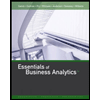
Corporate Finance
12th Edition
ISBN: 9781259918940
Author: Ross, Stephen A.
Publisher: Mcgraw-hill Education,
expand_more
expand_more
format_list_bulleted
Question
Chapter 7, Problem 25QAP
Summary Introduction
To compute:
Introduction: Investors invest in bonds to ensure regular income (interest income) on their investments. Bondholders are the investors who are risk averse.
Expert Solution & Answer
Want to see the full answer?
Check out a sample textbook solution
Students have asked these similar questions
Chewy, Inc. gas a gross profit of $500,000 and $140,000 in depreciation expense. Selling and administrative expense is $80,000. Given that the tax rate is 30 percent, compute the cash flow for the firm.
Dont answer i will unhelpful with incorrect values .
please comment i will write values.
What is corporate finance?
explain the part of finance.
Chapter 7 Solutions
Corporate Finance
Ch. 7 - Forecasting Risk What is forecasting risk? In...Ch. 7 - Sensitivity Analysis and Scenario Analysis What is...Ch. 7 - Prob. 3CQCh. 7 - Break-Even Point As a shareholder of a firm that...Ch. 7 - Prob. 5CQCh. 7 - Real Options Why does traditional NPV analysis...Ch. 7 - Real Options The Mango Republic has just...Ch. 7 - Prob. 8CQCh. 7 - Prob. 9CQCh. 7 - Project Analysis You are discussing a project...
Ch. 7 - Sensitivity Analysis and Break-Even Point We are...Ch. 7 - Prob. 2QAPCh. 7 - Prob. 3QAPCh. 7 - Prob. 4QAPCh. 7 - Prob. 5QAPCh. 7 - Prob. 6QAPCh. 7 - Prob. 7QAPCh. 7 - Prob. 8QAPCh. 7 - Prob. 9QAPCh. 7 - Prob. 10QAPCh. 7 - Prob. 11QAPCh. 7 - Prob. 12QAPCh. 7 - Prob. 13QAPCh. 7 - Prob. 14QAPCh. 7 - Prob. 15QAPCh. 7 - Prob. 16QAPCh. 7 - Prob. 17QAPCh. 7 - Prob. 18QAPCh. 7 - Prob. 19QAPCh. 7 - Prob. 20QAPCh. 7 - Prob. 21QAPCh. 7 - Prob. 22QAPCh. 7 - Prob. 23QAPCh. 7 - Prob. 24QAPCh. 7 - Prob. 25QAPCh. 7 - Prob. 26QAPCh. 7 - Prob. 28QAPCh. 7 - Prob. 29QAPCh. 7 - Prob. 30QAP
Knowledge Booster
Similar questions
- Pfizer Pharmecuticals has a $21,000 par value bond outstanding that pays 10 percent annual interest. The current yield to maturity on such bonds in the market is 13 percent. Compute the price of the bonds for the following maturity dates: a. 30 years b. 15 yearsarrow_forwardPurina Pet Food earned $74 million last year and paid out 20 percent of earnings in dividends. a. By how much did the company's retained earnings increase? b. With 36 million shares outstanding and a stock price of $18, what was the dividend yield?arrow_forwardProfessor Brown has just retired after 25 years with Jessup University. Her total pension funds have an accumulated value of $504,000, and her life expectancy is 25 more years. Her pension fund manager assumes he can earn a 9 percent return on her assets. What will be her yearly annuity for the next 25 years?arrow_forward
- Caroline Moore has a contract in which she will receive the following payments for the next four years: $10,000, $11,000, $9,000, and $8,000. She will then receive an annuity of $13,000 a year from the end of the 4th through the end of the 10th year. The appropriate discount rate is 11 percent. What is the percent value of all future payments?arrow_forwardNick Weber wants to have $120,000 at the end of 10 years, and his only investment outlet is an 8 percent long-term certicate of deposit (compounded annually). With the certificate of deposit, he made an initial investment at the beginning of the year year. How much does Nick need to deposit to get the $120,000 at the end of 10 years. a. What amount could Nick pay at the end of each year annually for 10 years to achieve this same objective?arrow_forwardHigh Hand Nursery has total assests of $900,000, current liabilities of $202,000, and long-term liabilities of $104,000. There is $90,000 in preferred stock outstanding. Twenty thousand shares of common stock have been issued. a. Compute book value (net worth) per share. b. If there is $40,000 in earnings available to common stockholders for dividends, and the firm's stock has a P/E of 22 times earnings per share, what is the current price of the stock? c. What is the ratio of market value per share to book value per share?arrow_forward
- Need the WACC % WACC and Optimal Capital Structure F. Pierce Products Inc. is considering changing its capital structure. F. Pierce currently has no debt and no preferred stock, but it would like to add some debt to take advantage of the tax shield. Its investment banker has indicated that the pre-tax cost of debt under various possible capital structures would be as follows: Market Debt-to-Value Ratio (wd) Market Equity-to-Value Ratio (ws) Market Debt-toEquity Ratio (D/S) Before-Tax Cost ofDebt (rd) 0.0 1.0 0.00 6.0 % 0.10 0.90 0.1111 6.4 0.20 0.80 0.2500 7.0 0.30 0.70 0.4286 8.2 0.40 0.60 0.6667 10.0 F. Pierce uses the CAPM to estimate its cost of common equity, rs, and at the time of the analaysis the risk-free rate is 5%, the market risk premium is 7%, and the company's tax rate is 25%. F. Pierce estimates that its beta now (which is "unlevered" because it currently has no debt) is 1.4. Based on this information, what…arrow_forwardNed's Co. has an average collection period of 45 days and an operating cycle of 130 days. It has a policy of keeping at least $10 on hand as a minimum cash balance, and has a beginning cash balance for the first quarter of $20. Beginning receivables for the quarter amount to $35. Sales for the first and second quarters are expected to be $110 and $125, respectively, while purchases amount to 80% of the next quarter's forecast sales. The accounts payable period is 90 days. What are the cash disbursements for the first quarter? Question 4 options: $92 $88 $76 $100 $110arrow_forwardLiberal credit terms for customers is associated with a restrictive short-term financial policy. Question 3 options: True Falsearrow_forward
- An accounts payable period decrease would increase the length of a firm's cash cycle. Consider each in isolation. Question 6 options: True Falsearrow_forwardWhich of the following is the best definition of cash budget? Question 10 options: Costs that rise with increases in the level of investment in current assets. A forecast of cash receipts and disbursements for the next planning period. A secured short-term loan that involves either the assignment or factoring of the receivable. The time between sale of inventory and collection of the receivable. The time between receipt of inventory and payment for it.arrow_forwardShort-term financial decisions are typically defined to include cash inflows and outflows that occur within __ year(s) or less. Question 9 options: Four Two Three Five Onearrow_forward
arrow_back_ios
SEE MORE QUESTIONS
arrow_forward_ios
Recommended textbooks for you
 Cornerstones of Cost Management (Cornerstones Ser...AccountingISBN:9781305970663Author:Don R. Hansen, Maryanne M. MowenPublisher:Cengage Learning
Cornerstones of Cost Management (Cornerstones Ser...AccountingISBN:9781305970663Author:Don R. Hansen, Maryanne M. MowenPublisher:Cengage Learning EBK CONTEMPORARY FINANCIAL MANAGEMENTFinanceISBN:9781337514835Author:MOYERPublisher:CENGAGE LEARNING - CONSIGNMENTPrinciples of Accounting Volume 2AccountingISBN:9781947172609Author:OpenStaxPublisher:OpenStax College
EBK CONTEMPORARY FINANCIAL MANAGEMENTFinanceISBN:9781337514835Author:MOYERPublisher:CENGAGE LEARNING - CONSIGNMENTPrinciples of Accounting Volume 2AccountingISBN:9781947172609Author:OpenStaxPublisher:OpenStax College Excel Applications for Accounting PrinciplesAccountingISBN:9781111581565Author:Gaylord N. SmithPublisher:Cengage Learning
Excel Applications for Accounting PrinciplesAccountingISBN:9781111581565Author:Gaylord N. SmithPublisher:Cengage Learning Essentials of Business Analytics (MindTap Course ...StatisticsISBN:9781305627734Author:Jeffrey D. Camm, James J. Cochran, Michael J. Fry, Jeffrey W. Ohlmann, David R. AndersonPublisher:Cengage Learning
Essentials of Business Analytics (MindTap Course ...StatisticsISBN:9781305627734Author:Jeffrey D. Camm, James J. Cochran, Michael J. Fry, Jeffrey W. Ohlmann, David R. AndersonPublisher:Cengage Learning

Cornerstones of Cost Management (Cornerstones Ser...
Accounting
ISBN:9781305970663
Author:Don R. Hansen, Maryanne M. Mowen
Publisher:Cengage Learning

EBK CONTEMPORARY FINANCIAL MANAGEMENT
Finance
ISBN:9781337514835
Author:MOYER
Publisher:CENGAGE LEARNING - CONSIGNMENT

Principles of Accounting Volume 2
Accounting
ISBN:9781947172609
Author:OpenStax
Publisher:OpenStax College

Excel Applications for Accounting Principles
Accounting
ISBN:9781111581565
Author:Gaylord N. Smith
Publisher:Cengage Learning

Essentials of Business Analytics (MindTap Course ...
Statistics
ISBN:9781305627734
Author:Jeffrey D. Camm, James J. Cochran, Michael J. Fry, Jeffrey W. Ohlmann, David R. Anderson
Publisher:Cengage Learning